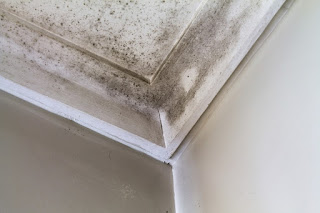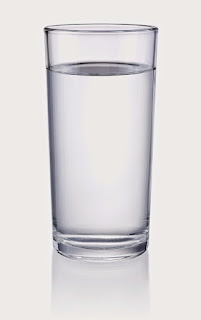Monday, November 26, 2018
Four Steps to Take After a Flood to Prevent Mold Growth
Mold doesn't need much moisture to grow, and even a bit of water seeping from a leaking pipe can create the perfect environment for mold. Mold thrives in dark, humid places, especially those lined with porous materials like carpet and wall insulation. Homeowners should take these steps immediately after a flood to stop mold growth before it starts.
The longer water sits, the more likely it is to promote mold growth. Standing water needs to be removed as quickly as possible, using a wet/dry vacuum cleaner if one's available. However, people should be careful not to plug machinery into an outlet or use extension cords near water. If a wet/dry vacuum isn’t an option, mops, towels, and buckets can be used to soak up water, which can be dumped onto the yard or down a drain.
The drying process can take several days or longer, but fans can help speed things up. They usually need to be left running for at least a week to remove moisture from carpets. Humidifiers can also help remove excess moisture to speed up drying time and limit mold growth. High-power fans can often be rented from a local home improvement store or professional cleaning company.
The cleaning process has several different steps of its own, beginning with steam cleaning carpets and flooring. While carpet padding usually needs to be replaced, carpet itself can often be steam cleaned to sanitize the material and remove odors. Anything else that came into contact with floodwater should also be cleaned and sanitized, including walls, hard floors, and other household surfaces. In some cases, furniture damaged by flood water can be cleaned and salvaged, but it's often best to discard tainted furniture, especially pieces that are upholstered.
After experiencing a flood, it’s not safe to assume that there’s no mold just because it's not visible. If left untreated, mold can cause health problems that can affect your family, ranging from respiratory infections to asthma attacks. When cleanup is complete, let ASAP Environmental, Inc. check your space for mold using our mold detection services. Our mold specialists will conduct a laboratory analysis of the air and surfaces in your property to determine whether mold is present. Schedule a mold inspection today by calling us at 800-349-7779 or filling out our online form.
Thursday, October 11, 2018
Is Mold Covered Under Homeowners Insurance?
Leaks, floods, humidity, burst pipes, water overflow—there are a number of reasons why mold could strike in a home. But once an inspector has discovered mold damage, is it possible that homeowners insurance will cover it? Luckily, in certain cases, homeowners insurance does cover mold damage.
Once mold has been detected, it's important to find out exactly what caused it in the first place. Not only will this make it easier to prevent more mold in the future, but it will also determine whether the damage will be covered under homeowners insurance policies. Insurance usually covers mold if the original cause of it was "covered peril," which is any sort of home-damaging event that is already covered under the insurance policy.
"Covered peril" situations include fires, lightning strikes, objects falling onto the home, icy pipes, and, perhaps most importantly, accidental water overflow from plumbing, air conditioning, or appliances. So, for example, if a pipe gives out while the homeowners are away and douses a wall with water, then any ensuing mold should be covered. The key to "covered peril" situations is that they are sudden and unavoidable, not long-term and preventable.
In cases where regular maintenance or scheduled mold inspections could have prevented the mold problem, it is far less likely that homeowners insurance will help. For example, if a homeowner neglects broken shingles on an old roof for several years, and ensuing rain leakages cause a slow-growing mold problem in the attic, then homeowners insurance likely won't cover the damage. Additionally, standard homeowners insurance policy probably won't cover mold as a result of flooding—a separate flood policy will be needed for such protection.
ASAP Environmental, Inc. has been serving homeowners in the Boston area for 25 years. Our team performs mold and lead inspections and risk assessments, as well as other health, safety, and environmental services. Schedule an inspection with us today or call 800-349-7779 to receive a free estimate.
When Homeowners Insurance Will Likely Cover Mold
"Covered peril" situations include fires, lightning strikes, objects falling onto the home, icy pipes, and, perhaps most importantly, accidental water overflow from plumbing, air conditioning, or appliances. So, for example, if a pipe gives out while the homeowners are away and douses a wall with water, then any ensuing mold should be covered. The key to "covered peril" situations is that they are sudden and unavoidable, not long-term and preventable.
When Homeowners Insurance Won't Likely Cover Mold
ASAP Environmental, Inc. has been serving homeowners in the Boston area for 25 years. Our team performs mold and lead inspections and risk assessments, as well as other health, safety, and environmental services. Schedule an inspection with us today or call 800-349-7779 to receive a free estimate.
Friday, August 3, 2018
Reduce Indoor Moisture With Our 5-Step Plan
A moist environment can lead to mold growth in the home, potentially resulting in costly property damage and health concerns for residents. When humidity levels are high, as they sometimes are in the New England region, mold can begin to multiply within 48 hours. Fortunately, these five simple steps can help area homeowners reduce moisture in their homes and limit opportunities for mildew and mold spores to spread.
Ideally, indoor humidity should fall between 40 and 60 percent relative humidity (RH), so it's useful to have a humidistat to verify that the air levels in your home are within the recommended window. An RH level above 70 percent provides optimal conditions for mold growth, and using a dehumidifier is the easiest way to reduce high humidity levels in the home.
This may sound like a basic step, but it really is crucial to keep your home well-ventilated by opening windows and running vent fans whenever possible. This is especially important in rooms such as the kitchen and bathroom, common culprits when it comes to mold growth. When using the air conditioner—a tactic that can also reduce moisture—ensure the fan is on to improve ventilation throughout the house.
Even when the dryer is vented to the outdoors, using it excessively can increase home moisture levels. In nice weather, hang clothes outside to dry. Don't use an indoor clothesline, since wet clothes also add moisture to the air. Avoid long, hot showers, as they create steam that increases humidity. Take cooler or shorter showers instead, especially in hot weather.
Replacing air filters in the air conditioner and furnace, as recommended by the manufacturer, will maximize the airflow offered by these systems. When air is blocked, the chances of mold development and growth will only increase.
Homes that are drafty are more susceptible to high moisture levels. If air is leaking from windows, ducts, or doors, sealing these areas can help lower moisture in the air and improve energy efficiency. Replacing old windows with Energy Star-rated models also makes a big difference.
In the Dorchester area, ASAP Environmental, Inc. offers mold inspections to homeowners who are concerned about the presence of mold in their home. Our qualified technicians analyze the quality of the indoor air and perform other diagnostic tests that even detect invisible mold, allowing remediation of small issues before they get worse. Call us at 800-349-7779 to receive a free estimate or fill out our form to schedule an inspection.
Use a Dehumidifier With a Humidistat
Ventilate Well
Consider Making Minor Lifestyle Changes
Service the HVAC
Seal Air Leaks
In the Dorchester area, ASAP Environmental, Inc. offers mold inspections to homeowners who are concerned about the presence of mold in their home. Our qualified technicians analyze the quality of the indoor air and perform other diagnostic tests that even detect invisible mold, allowing remediation of small issues before they get worse. Call us at 800-349-7779 to receive a free estimate or fill out our form to schedule an inspection.
Monday, April 30, 2018
How Does Lead Find Its Way into Drinking Water?
According to the United States Environmental Protection Agency (EPA) and the Centers for Disease Control and Prevention (CDC), there is no known level of lead in a child's bloodstream that's considered safe. Lead is especially harmful to children and dangerous for adults as well. Repeated exposure can lead to health issues, learning disabilities, and behavioral problems.
Lead is a heavy metal and a chemical element that, in the past, was included in mixtures of paint and gasoline. Today, it can end up in drinking water due to the following causes:
Exactly how much lead ends up in drinking water depends on several factors. These include the water's acidity and alkalinity, the amount of lead the water contacts, how long the water stays in the lead pipes or fixtures, and the types of minerals present in the water. A way that utility companies can minimize how much lead ends up in water used by consumers is to treat the water to make it less corrosive.
The first step to take if you suspect lead in your home's drinking water is to request a water quality report from the water utility company. In addition, it's important to get the water tested since the source of lead contaminants, if present, may be the home's pipes or fixtures. A home lead inspection can determine if there's lead in the water or elsewhere. A water filter that's certified to remove lead can also be helpful.
ASAP Environmental, Inc. offers home lead inspections to keep residents safe from the hazards of lead. We can check to see if lead is present in drinking water or other areas of the home. We also can inspect for signs of mold. Call us at 800-349-7779, or schedule a home lead inspection online.
Lead in Drinking Water
- Deteriorating Lead-based Paint: Particularly in homes built before 1976, particles from disintegrating lead-based paint can contaminate the water that household members are drinking.
- Water Pipes: Old lead-based pipes, either inside the home or connecting from the house to the neighborhood's main water supply pipe, can corrode and cause lead to end up in drinking water.
- Fixtures: In older homes that haven't been updated, the faucets themselves may contain lead, and traces may be ending up in the tap water.
Exactly how much lead ends up in drinking water depends on several factors. These include the water's acidity and alkalinity, the amount of lead the water contacts, how long the water stays in the lead pipes or fixtures, and the types of minerals present in the water. A way that utility companies can minimize how much lead ends up in water used by consumers is to treat the water to make it less corrosive.
Addressing the Problem
ASAP Environmental, Inc. offers home lead inspections to keep residents safe from the hazards of lead. We can check to see if lead is present in drinking water or other areas of the home. We also can inspect for signs of mold. Call us at 800-349-7779, or schedule a home lead inspection online.
Subscribe to:
Comments (Atom)



